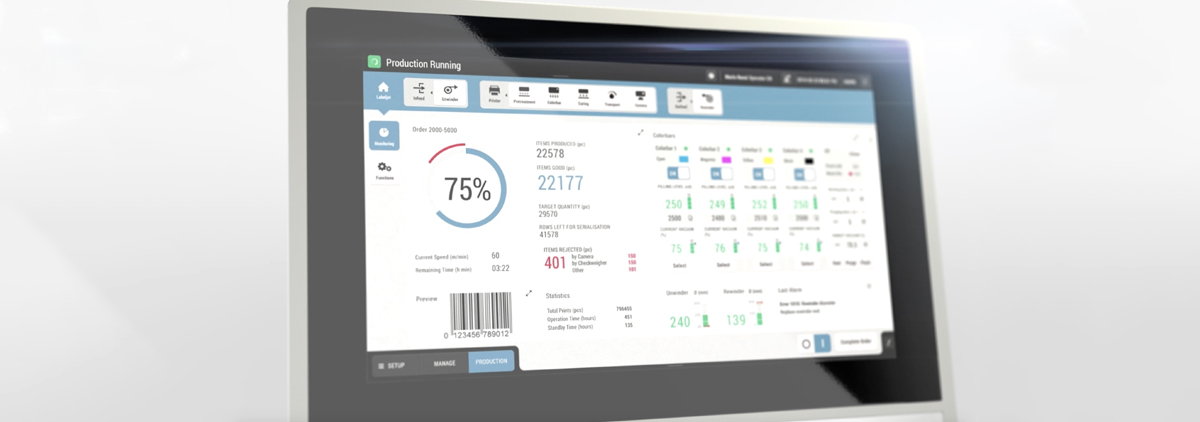How to unlock your hidden productivity with OptiMate
When thinking about famous inventions of the past, we tend to assume that as soon as they came into being, their eventual popularity was a given - just a matter of a few, technical upgrades. In actual fact, new, groundbreaking innovations are often ridiculed, and it’s only through painstaking design refinements that they find their way into the mainstream.
In 1943, the legend goes, Thomas J. Watson, then president of IBM, said "I think there is a world market for maybe five computers"[1]. 30 years later, although more than 5, computers were still a niche and would have remained so for many years, if not for major leap forwards like the graphical interface and the mouse. What made them ubiquitous was not so much an improvement in power as it was in user experience. As PCs became easier to use, new applications were made possible. Productivity software finally became a thing, giving a boost in work performance so remarkable that not using a personal computer was no longer conceivable. That's the purpose of design: not to make things fancier, but so much easier to use that they unlock hidden productivity.
That is also the purpose of OptiMate, our new human-machine interface. OptiMate is the pinnacle of a 2-year development in the field of overall equipment effectiveness (OEE). Born to simplify and enhance the user experience, it turns the operator's job on its head, as it works as a single point of access for any services we offer, such as IoT as a service, customer care, Big Data analytics, and machine learning algorithms. Unlike traditional HMI, OptiMate displays the information that is relevant to the task at hand and nothing more, reducing the burden on the operator through smart connectivity and advanced functionalities.
Ultimately, we believe, OptiMate shows our commitment to continuous innovation and our dedication to solve the problems of the customers, whatever they might be.
Optimate: when usability unlocks productivity
OptiMate is built upon the principles of user-centered design (UCD), a project approach that puts the user at the heart of the design process. According to the UCD methodology, the product must be intuitive to interact with, accessible, and pose no barrier to entry. UCD starts from identifying the user and their needs, and, through continuous iteration, optimizes the product to maximize its value for the customer.
During the design of OptiMate, our experts in the field were able to pinpoint a series of customer needs in terms of usability, guided approach, compatibility with existing protocols and applications, and support for current or upcoming technologies in the industrial domain. OptiMate's goals can be summarised as follows:
- Simpler is better
- Cross-compatibility
- Industry 4.0-ready
Simpler is better
At ACMA, we build human machine interfaces according to the tenet that less is more. Simpler, it turns out, it's better. Yet, better for who? More often than not, user interfaces are built by developers for developers. They are engineer-oriented. OptiMate, on the other hand, addresses the needs of a wide variety of users - the generic operator, the maintenance operator, the production manager, and more. The interface is designed in such a way that no training is required. How is that possible?
That’s the magic of invisible design - in short, the idea that good design is invisible. The interface, simply put, hides the complexity of the machine under a lean UX architecture, avoiding information overload and making everything easy as pie. Rather than leaving the user to their own devices, OptiMate enables a guided approach, showing the data the user needs, when they need it.
Because of this, OptiMate fit a plethora of use cases of today as well as of tomorrow. Simplifying day-to-day operations is the tip of the iceberg. Complex activities and services, such as deploying over-the-air updates, diagnostics, advanced troubleshooting and production data analysis, are just some of the arrows in OptiMate's quiver.
Cross-compatibility
OptiMate is no different from any other productivity tool: the more it can be used, the more useful it is. But to increase the number of use case scenarios, accessibility is key. That’s why we have put cross-compatibility at the cornerstone of our accessibility strategy.
And it doesn't stop here. Accessibility is a matter of software as much as it is about hardware. On this line, OptiMate is compatible with the most common PLC protocols on the market, so as to eliminate any barrier to entry.
Industry 4.0-ready
In addition to the standard operations carried out by other HMIs, OptiMate offers web connectivity and an enhanced user experience via a network of services and applications. Not only is it a tool to effortlessly navigate the machinery's documentation, it encapsulates our vision, as it is designed to fit the most complex Industrial IoT scenarios through user-friendly yet cutting-edge technologies, such as artificial intelligence, edge computing, and M2M communication.
This is achieved through OTA updates, so as to deliver the most advanced HMI solution on the market. This way we can ensure that OptiMate is continuously upgraded and secure, and, as a result, that the lifetime value of OptiMate always increases.
In conclusion, OptiMate provides a single point of access for any functionalities of the system, right at the user fingertips. It is designed to be used from anywhere, on any device, without any training. OptiMate is built to support standard HMI features as well as current and upcoming advanced technologies, such as AI, edge computing, and Industrial IoT. Finally, it proves that ACMA is a key partner for any business - a partner that is always up to date and more than ready to serve the most diverse customer needs.
For more information about OptiMate, contact us: our experts will be at your service.



